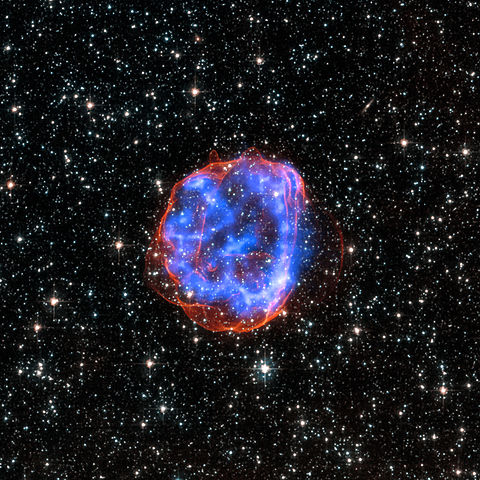Tag Cloud:
User Tools
Sidebar
Table of Contents
Rastan Particles
Rastan Particles are a type of hadron, a relatively large subatomic particle similar to protons and neutrons. Where they differ, however, is that their “shape” is elongated into a prolate spheroid rather than the standard spherical “shape” in which other particles are generally conceptualized. Their unusual configuration causes them to align with magnetic fields and is the source of their useful properties. These particles were first detected in 2704PT in the Rastan Supernova Remnant, located in the America Nebula.
Rastan Particles have applications in the transfer of high-energy power in magnetic field conduits. Galactic Energy Supplies are thought to be conducting ongoing research into further, more specialised applications of these rare particles. Rastan Particles must be collected in space by specialised ships or science vessels, as the presence of strong magnetic fields causes them to decay.
Properties
Rastan Particles are hadrons comprised of 2 up quarks and 1 strange quark, making them a type of sigma baryon. However, unlike the majority of hadrons, their charge is strongly aligned along a single axis, like a subatomic bar magnet. They are often conceptualised as an prolate spheroid. Internally, they are conceptualised as having the 2 up quarks orbiting in a “dumbell” configuration, similar to an electron p-orbital aligned with the major axis, while the centre point is orbited by the strange quark in a tight circular orbit. This alignment results in a strange interaction with magnetic fields, called the Rastan Bridging Effect.
When introduced to a strong magnetic field, Rastan Particles immediately align themselves with the direction of the magnetic containment field lines, while also being drawn towards the containment horizon of the field. They spread themselves across the containment horizon, and bridge across any momentary gaps or inconsistencies in the magnetic field, providing stability and more effective containment.
Formation
In the observed universe, Rastan Particles are concentrated in supernova remnant clouds and are also emitted as streams by colliding pulsars or other neutron stars. The precise mechanisms for particle formation are unknown, but given these conditions are likely to require extremely high energy and considerable gravitic pressure. Current novel theories imply that powerful gravitic waves cause the elongation and compression of conventional (very high energy) particles along an axis, which somehow stabilises to produce these spheroid particles.
Rastan Particles are relatively stable in the absence of strong magnetic fields. They are most commonly collected by careful propulsion through the navigable fringes of supernova remnants. Special heat-resistant ramscoops are deployed to collect gases from the clouds, and sifted through atom-scale gratings to seperate out the particles.
Applications
The effect that Rastan Particles have in bridging magnetic fields has numerous applications in the transfer and use of energy. When their power conduits are doped with Rastan Particles, devices that make use of high-energy charges lose substantially less energy in heat loss and containment energy.
Particles used in this manner spontaneously decay due to magnetic field fluctuations, which gradually tear individual particles apart. A single measure of the particles typically has a utility lifetime of only a couple of hours before the particle concentration drops below effective levels.
Rastan Particle decay releases small amounts of ionizing radiation, which is generally contained within the shielded power conduits. This radiation does contribute to overall wear and tear, and may shorten the time between required maintenance cycles. The amount of damage from a single application is low, and many applications would be required before damage seriously affected a device's performance.
OOC Game Information
Rastan Particles are a type of Exotic Particle - an Exotic Substance related to Etheric Science. A physrep of some kind of energy containment device can be used to represent up to 10 measures of this substance, but particularly large physreps can hold more.
A measure of Rastan Particles can be applied to any lammied item that holds and uses Charges - weapons, science devices, charge packs or similar. Applying a measure of this substance to such a device will reduce the amount of charges required to use the item's abilities by 1 (to a minimum of 1 per use).
For example:
- An energy weapon that has the following abilities; tear 1 charge to make a THROUGH call, 2 charges to make a DISRUPT call, or 4 charges to make a LETHAL call.
- The same weapon can instead make a THROUGH or DISRUPT call for 1 charge each, and a LETHAL call for 3 charges while enhanced by Rastan Particles.
As with all Exotic Substances, a character with at least 1 rank in the relevant speciality (Etheric Science in this case) can spend 1 minute of appropriate roleplaying to apply 1 measure of Rastan Particles to an item. After this roleplaying, they should unpeel the sticker that represents this substance, stick it to the lammie of the item being powered-up, and record the current date and time on it.
The boost provided by this substance wears off 2 hours after the time recorded on the sticker.

